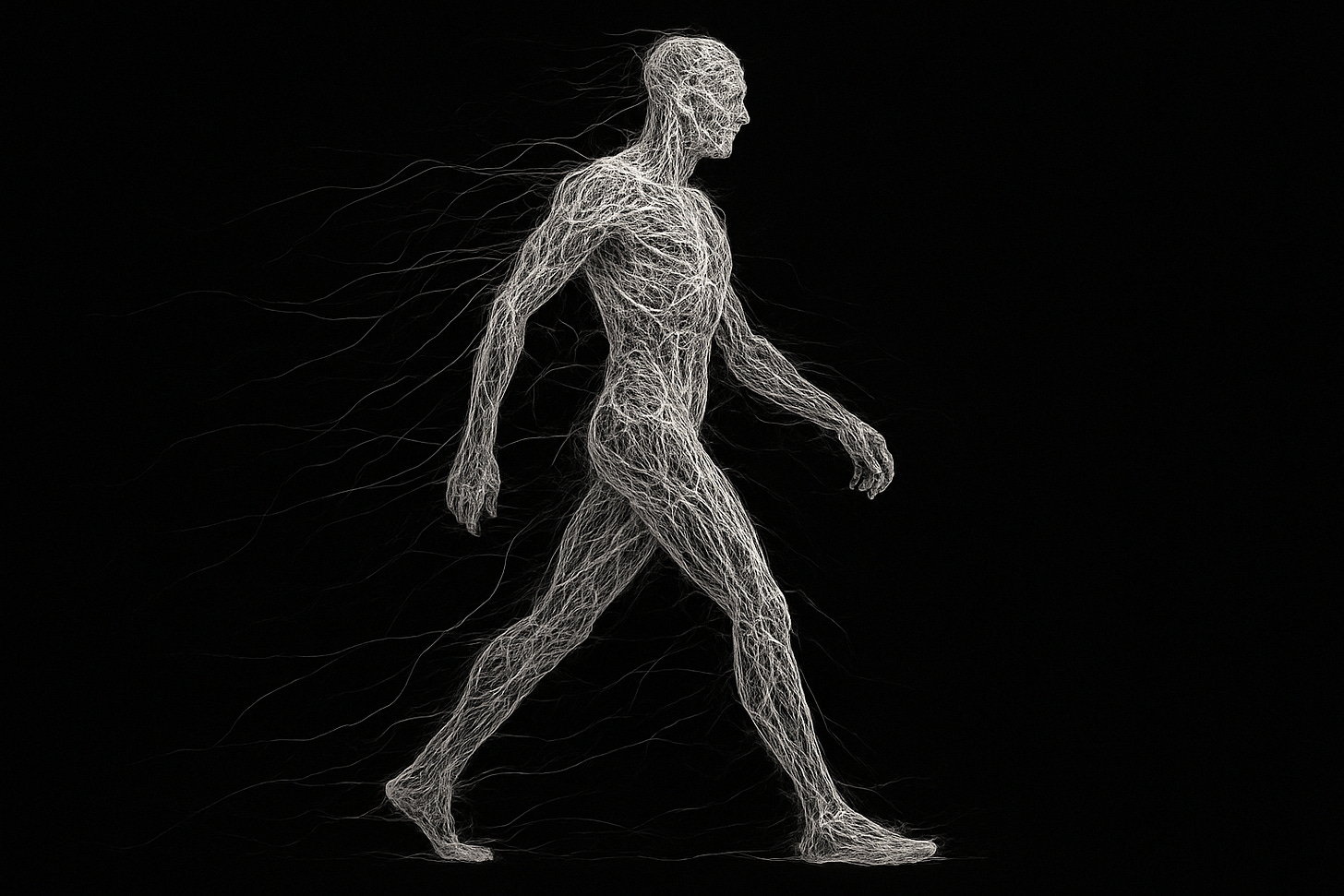Built to Move
How Structure Shapes Movement
Hey friends and fam!
In my last post, Survival and Movement, I shared the most important idea I took from recording a podcast with David Weck, inventor of the BOSU Ball: survival is the ultimate metric for understanding, analyzing, and teaching movement. Locomotion, swinging, throwing, catching, and carrying are the roots of human movement as apex predators.
Movement reflects not just our strength or will to survive and thrive, but also the body’s underlying structure. When I asked David about the relationship between structure and function, he put it simply:
“Structure determines function, but function reshapes structure over time.”
Let’s break that down.
Structure determines function
To understand how we move, let’s first analyze the structural components that make movement possible. Those can be broken down into three key elements: fluid, bones, and fascia.
Fluid primarily resides in the muscles, which David calls fluid transducers that contract and relax in a coordinated manner to produce movement.
Bones provide the skeletal framework for effortless strength. They are stable, non-deforming structures that create a scaffold which, when aligned properly, supports the body with minimal muscular effort, enabling efficient force transmission.
Finally, fascia is the ubiquitous “container” that surrounds, connects and integrates everything (muscles, bones, nerves, and more) giving structure to both fluid and skeleton. Fascia can transmit force faster than nerves, making it a critical player in rapid, coordinated movement.
Viewed through the lens of survival, these elements form a single cohesive structure.
The body is a pressurized fluid system, attached to strong skeletal levers with elastic springs.
The arrangement of fluid, bones, and fascia in movement to achieve tensional balance—where forces are distributed evenly to reduce strain—funnels force down to the ground with precision and efficiency. This is crucial for survival because the 9.81 m/s² downward pull of gravity is ever-present, whether we’re moving or not.
Without a clear grasp of this structural foundation, any attempt to optimize movement is like building a house on sand—it lacks the stability needed for sustainable and powerful function.
Function reshapes structure over time
The body’s structure is not fixed. It is always remodeling itself according to the forces acting through that structure as we move, with fascia playing a central role as the body’s adaptive network. As a universal linking tissue that surrounds muscles, bones, and organs, fascia acts like a sweater that transmits forces and signals across the body for movement.
However, as we discussed in the previous post, in modern life most people live sedentary lives disconnected from the purposeful movement optimized for survival. Fascia will mold to support your most common movements, whether good or bad, ultimately altering the body’s structure to accommodate imbalances and conform to dysfunctional movement habits. If you sit at a desk all day, fascia will tighten around the sitting position, leaving hip flexors feeling chronically tight.
Yet the same responsiveness that reinforces imbalance can also be the key to rebuilding powerful, efficient movement. With the right kind of training, fascia can reawaken your connection to your skeleton’s natural strength — restoring the strong, elastic, and effortless design of your body.
Balanced Locomotion is the Key
Locomotion is the bridge that connects all other functions of survival and is still an inexorable part of the human experience despite our sedentary lifestyles. Even walking just 3000 steps a day adds up to over a million steps annually. Don’t forget that every step is an opportunity to strengthen or to degrade your structure.
Perfecting balanced locomotion is the easiest and fastest way to reconnect with your apex predator capacity. By using internal and external torsion of the spine — and adjusting the core’s pressure system — we can reposition ourselves in space while keeping the center of gravity stable, allowing for efficient force transmission with minimal energy loss.
Stay tuned for the next post with more detail on how to move to optimize force transmission.
Connect with J-Mart on Social Media
Nostr - npub1cqfrrgxs6mwpl2xpmh2kzw322qv2n0e4r65jllzncv65krmvwhnsct3p5u
Email - jmartfit@substack.com
Instagram - https://www.instagram.com/jmartfit/
Facebook - https://fb.me/jmartmoves
Medium - https://jmartwrites.medium.com/
You can also check out my State of Health Podcast (health education geared) on the platform of your choice:
Apple -
Spotify -
Amazon Music - https://music.amazon.ca/podcasts/01bb34c0-00a2-45e2-8627-95c32aba7c0e/state-of-health


